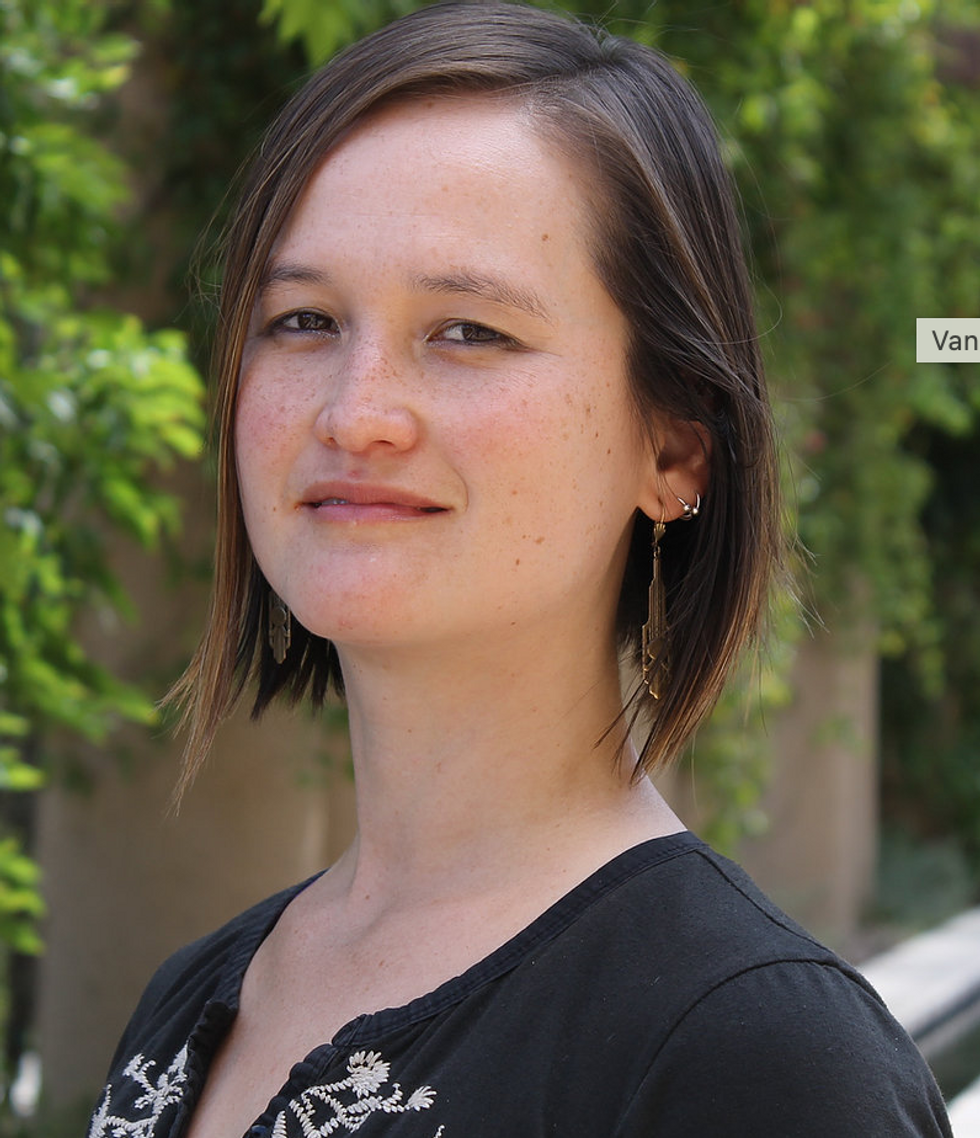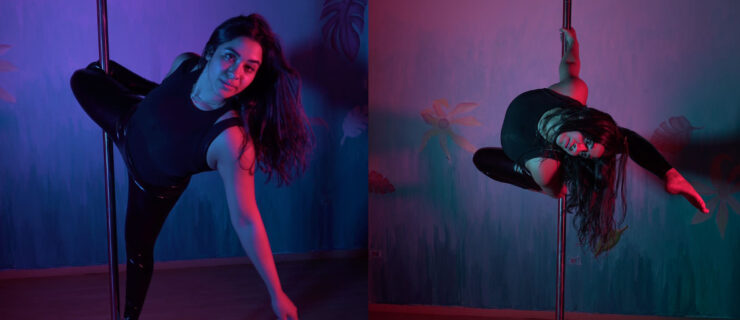How Dance Experts Are Reimagining the Post-COVID World
The lurch of conflicting COVID-19 guidance has wildly shifted how we occupy space with one another. Our collective improvisation through the “coronasphere” (as scholar Kate Elswit brilliantly named it) has been subject to an onslaught of rules, reversals and regulations.
As part of a shared research project with Dr. Heidi Boisvert and Melissa Painter through the Guild of Future Architects, we spoke with a number of dancers, choreographers and scholars thinking through the ramifications of COVID on our lives, and what comes next. What we found was galvanizing and unsurprising: that dancerly folks are abundantly contributing to the reimagining of civic and cultural structures in anticipation of an eventual, post-COVID moment.
Kate Elswit, Reader in Theatre and Performance, The Royal Central School of Speech and Drama
“Simple respiration data doesn’t capture people’s breath experience. When the pandemic came, experiences of breath changed the extent of our bodies. People were talking about how their world was getting smaller, but actually the big issue was as you’re walking the street, as you’re walking in the grocery store, that your body was bigger. So how do we start to train ourselves to engage with that heightened feeling of breath when others are in proximity? That’s already a social choreography.”

Sara Wookey, Dance Artist, Researcher and Consultant
“This time has really thrown up a great opportunity to look more closely at something that is always there. It’s not just a relational practice; it’s this real ability to be in the room together with others and to create a sense of connection and belonging. Dancers have something to offer here.”

Silas Riener, Performer, Choreographer and Teacher
“It would be deeply comforting to seek solace and certainty in the foundations which built the work and artists of the 20th century, and the innovation of the early 21st. I feel the momentum to return, to get back, to go back, to be back. Maybe that is part of an insidious collective delusion. It’s so seductive to return to what was, but there was so much wrong. I suggest we take advantage of this moment to be aware, to be better. This is a moment of unlearning, of undoing. We are traumatized, we are brand-new little babies. We don’t know how to do anything.
“For those of us who teach and touch down in the university (and move through the reality of freelancing and making our own work), the empty promise of releasing young artists into a field we all know cannot support and employ most of them feels more hollow than ever. We rely on young artists who graduate to define the field. We hope they break the mold. We hope they find ways to live, but I worry we are not being honest about the tools we give them.
“I don’t have answers, I only have questions. Restlessness, uncertainty, unsettled-ness drive the works that feel the most important to me. So with utmost suspicion—and reverence—for the power of the past, I offer you Merce Cunningham, who said before nearly every class, ‘Let’s begin again.'”
Vanessa Chang, Senior Program Manager at Leonardo, The International Society for the Arts, Sciences and Technology
“What does it mean to move or not move in the world? The last year has called attention to who owns place and space. It’s very important to me to attend to the specificity of location, and work that does that, and that can invite people to move through it. Artistic practice can invite a different form of moving through that sustains attention that isn’t just spectacle. I think we really need to invite reflection.”

Teena Marie Custer, Street Dance Theater Artist in Pittsburgh
“I think there were already cultural shifts happening in how concert dance was presented even before COVID-19. The circumstances that exist now will give the concert-dance community a chance to reassess equity in terms of who and what is seen.

“Although I feel that humans will always have a need for live interaction with an audience (I have felt this through the absence of my street/social-dance community), we have normalized watching dance virtually, from TikTok to The Joyce livestreams. After having all my touring work canceled or moved to a virtual platform, I am reassessing what skills the new generation of dancers will need to navigate the new normal.”
Jessi Stegall, Dance Artist and Graduate Student at Harvard Medical School
“During the height of the pandemic, many members of the dance community found themselves out of work, questioning the sustainability of their role as artists, and considering, perhaps for the first time, the ever-present boundaries of their work. As someone who is consistently grappling with my own duality of ‘artist’ and ‘nonartist,’ I resonate with the seemingly mass identity crisis.
“This is not an obstacle—it is an opportunity to dig deeper into values. Let’s reestablish our communal and individual values of creative making. What does it mean to flourish as a dancer? As an artist? As a human? As writer and choreographer Andrew Simonet so eloquently puts it, ‘It’s better for the world to keep your mission and change your tactics than if you lose your mission and keep making art.'”

Ariane Michaud, Lead Producer at The Conference for Research on Choreographic Interfaces
“I used to find that interactions within the community existed in relation to the amount of work and play that we could get in every day. Many conversations revolved around ‘the hustle’ and the constant drive to do more, see more, be more. During COVID, artists, choreographers, producers were able to assess the imbalance that this placed on our lives and on the community as a whole. This pause did not come without hardship, however; taking a moment to reflect on the constant motion has created space to re-enter and re-create according to not only new physical standards but mental and emotional standards, as well.
“What should follow is a restructuring of the ways funding can and should support dancers, choreographers and arts administrators through this shift. The number of career pivots we are already seeing, alongside the fight to elevate the minimum wage, will affect the ways in which we gather as a community. In the current economy, it is no longer enough to do what you love.”
Ryat Yezbick, Assistant Director of the Shared Futures Program at the Guild of Future Architects
“Coming out of social isolation has felt both exhilarating and daunting; being amongst other people again has often left me feeling fatigued from a shared heightened sensitivity to ourselves and each other. To ‘catch up’ with others coming out of COVID is a somatic and emotional experience as much as it is an intellectual endeavor. The physical touch and proximity we were collectively denied, the nonverbal comforts we derive from being amongst each other, now feels like an ecstatic experience full of presence.

“‘Catching up’ has therefore occurred through long-held hugs or impromptu dance parties, moments in which our bodies can collectively release all of the shared grief through the ritual of shared physical expression. How do we take this heightened presence and care for our inner worlds into all that we manifest in the future? How do we let this newfound sensitivity inform how we relate to ourselves and one another?”

Andrea Miller, Founder and Artistic Director of GALLIM
“The threshold of the theater or museum—that’s not where art and creativity start or stop. We’re hopefully entering into a more ready climate to think about creativity and artistry without needing an invitation to enter the theater or museum. I wonder if we’re set up for it in terms of how schools teach dance. It might be a stretch. I’m really excited to see the kind of artistry and creativity that this time has invited people to value and adventure in, because I think that there’s more chances to become part of a conversation. We need strangers to dance. Strangers need you to set the conditions to dance.”




